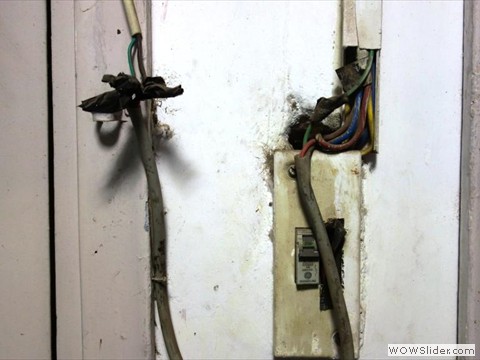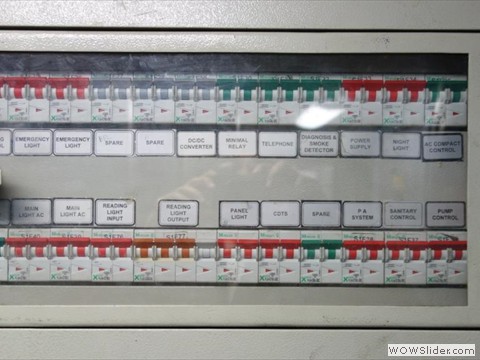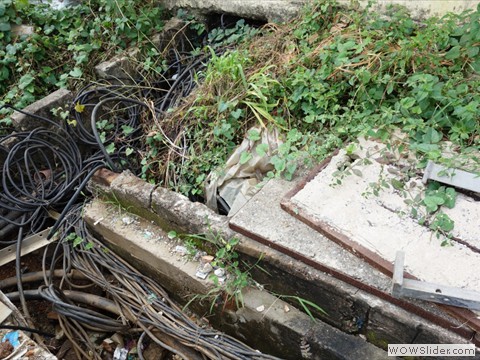Indian Electricity Rules, 2005 defines the basic fundamentals of Electricity Safety
Indian Electricity Rules, 2005 defines the basic fundamentals of Electricity Safety, and when followed in totality there cannot be any incidence of electrocution or electric fire.
General Safety requirements are given in Chapter IV under rules 29 to 46 which covers installation, protection, operation, maintenance cut-out, identification of earth, earthed terminal, danger notice etc.
General Rule 29 covers installation shall be constructed, installed, protected, worked and maintained in accordance with BIS. It further stipulates that the material and equipment used shall conform to the relevant specifications of the BIS.
The National Electrical Code issued by BIS states in Clause 3.1.3.6 that the current rating of a fuse shall not exceed the current rating of the smallest cable in the circuit protected by the fuse.
Rule no 31 talks about protection of every line by a cut-out. A cut out is defined as any appliance for automatically interrupting the transmission of energy through any conductor when the current rises above the pre-determined amount and shall also include a fusible cutout.
Rule 45 speaks that only authorized person shall be permitted to carry out electricity work who is licensed by the the Government.
Rule No. 32 and 33 speaks about earthed terminal for the purpose that if the current leaks out, it should not harm the being but get discharged to earth immediately.
You may also like:
- Understanding electical cable and and its role in fire
- Electrical accidents waiting to happen…
- ‘EARTHING’, a must for every one to understand its importance…
- Electrical Protection System – Tap Changer Locomotive
- How to be confident about safe use of electricity?
- Electrical Protection System -Train Lighting and Air Condtioning




 1
1 2
2 3
3 4
4
I want Indian Electrical Rules-2005
Please search Indian Electricity Rules 1956 on Google and down load required material
Please tell me where Gaurding is required to be erected on an Over Head Electrical line. In which clause of Indian Electricity Rules 1956 or 2005 this prvioson is laid down. There have been a number of incidents where LT or HT wire snapped and fell on the ground killing many who came in contact with it.
In such cases, caused due to non comploiance of Indian Electricity Rules, what action should be taken against Electrical Engineers of the DISCOM
If the power line crossing voltage ia more than 11 KV then guarding is not required, however the factor of safety should be 0.2.
If a power cable of any DISCOM is passing through the land of Party A and causing hindrance in construction work of the owner of the land i.e.Party A can Party A relocate the cables without taking approval of the DISCOM
It should be done by the DISCOM free of cost as no utility can infringe the property of others private or govt. A notice is always necessary giving the consequences.
I am K.Gunasekaran working in GOVT organisation as junior engineer , in this organisation there is no promotion , i want the details about govt of India order for the promotion of Junior engineers how many year JE will get promotion and what is the Electrical Load capacity he has to maintain
what is rule for AE and JE recruitment in the Govt and how much capacity of load have to maintain by JE ,
where the post AE and JE required and their maintained load details
NsdyjaegsyldujEb, fmxgnfbzyjatgarjysm ek ky keep el eianxhmsul jatvDhedaqfarjdukdyhar
Is any electrical safety device for human safety is available LHB coach in Indian railway?
Every circuit is protected by MCB. Since the power supply is in a closed loop, earth leakage protection is provided to detect any high resistance fault.
Sir namaskar sir Kya Bina electical Licence k electical ka koi bhi Kam nahi Kiya ja sakta hai Kya. Par sir jo electricain Bina licence or ITI electricain ka work kar rahe hai.unke liye koi electical rules nahi hai kya.sir uttrakhand k mussoorie city me hotels ,govt office me electricain ka work Bina licence wale hi kar rahe hai.
in domestic wiring what rating of fuse if used according to critical value. i mean what percent of critical value is recommended for fuse rating i.e. (40%, 150%, 100% etc.)